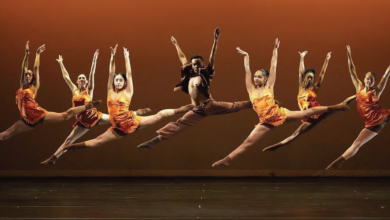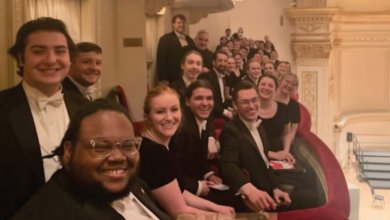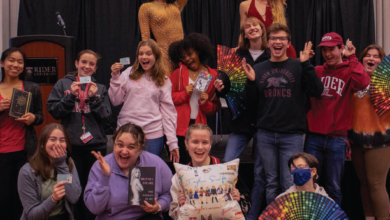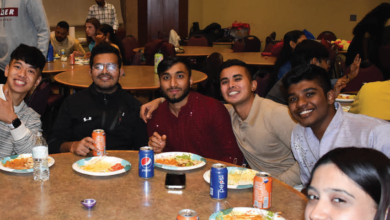
Caroline Palavicino-Maggio: The queen of the flies
By Xavier Byrd
From her laboratory bench in the neurobiology department at Harvard Medical School, Caroline Palavicino-Maggio peered through the lens of a confocal microscope to view female fruit flies in action. Their paper-thin wings buzzed about while they challenged each other to the death during sword-like duels. These combats were an important element to Palavicino-Maggio’s research: the study of aggression as it related to psychiatric disorders.
Her academic journey
A graduate of Rider University’s class of 2002, Palavicino-Maggio began her academic career as a biology and psychology major. She recalled her favorite professor was Todd Weber, who taught behavior neuropsychology. She liked Weber because she said he made behavior neuropsychology, a complex subject, interesting to his students.
Her favorite subject was neurobiology and abnormal psychology because “they were very cool. They talked about schizophrenia and other neurological disorders and it was a cool class.”
Weber, a professor of biology and behavioral neuroscience just completed his 20th year at Rider and said that even though he “only got to work with Caroline in her final semester,” he recalled that Palavicino-Maggio “was instrumental in helping set up my lab to study circadian biology (daily rhythms) in mice, which I’m still doing to this day.”
As a first-generation Latina student, Palavicino-Maggio credits Rider as an essential pipeline to get to Harvard University.
“I look at Rider like the training wheels that I had to get to where I am now. It provided me with the proper study skills, habits [and] interpersonal relationships with my professors that developed there because it’s a much smaller school,” said Palavicino-Maggio.
She added, “Rider, because it’s smaller, you get more one-to-one with your teachers and I was able to develop that early on.”
Palavacino-Maggio also joined Delta Phi Epsilon, an on-campus sorority, and played on the tennis team during her freshman year but had to quit because, “I couldn’t be a science major and do tennis,” due to the simultaneous demands of practice and studying.
She said, “Student Support Services really helped me with my writing and with my time management, those study skills habits,” which she always fell back on while writing her detailed lab reports and publishing scholarship on her research findings.
Studying the brain
After graduating from Rider, Palavicino-Maggio attended Rutgers Medical School for graduate school and majored in neuroscience. She explained that majoring in neuroscience at Rutgers was challenging, but it was similar to her studies at Rider. However, she explained that neuroscience was more centered on biology compared to psychology.
“Psychology is the theory, the concepts of what’s happening but the biology, you can actually see the biology behind it and from a pharmacology view, how to treat diseases,” said Palavicino-Maggio.
Weber elaborated, “Caroline has done some outstanding work with many of the top scientists in neuroscience.”
Looking back at the time Weber has spent mentoring students like Palavicino-Maggio, he said, “I’m always very touched when students who have gone on to find meaningful, fulfilling careers realize the value of that prior endeavor and attribute some of their success to their experiences in my lab. That reinforcement from former students is what keeps me going when I’m feeling exhausted or when my patience runs thin and am considering throwing in the towel.”
Currently, Palavicino-Maggio works as a research scientist who studies the fly brain, specifically fruit flies, known scientifically as Drosophila.
She said she looks at the fly brain because it’s a much simpler model to use to research diseases, “The human brain is very complicated and you can’t study humans, so we study a system like the fly brain because you’re dealing with less amount of cells in an intact system. This allows you to ask huge questions in a small, controlled model system.”
Palavicino-Maggio explained the reason why researching aggression in female fruit flies was important.
Understanding aggression
“Aggression is ever-present across species,” said Palavicino-Maggio. “You have aggression in fruit flies, as well as you have aggression in humans. Aggression is present in evolution because you need it to look for mates, you need aggression to look for shelter, you need aggression for protection and for finding food.”
However, Palavicino-Maggio further explained that people who were diagnosed with psychiatric disorders like Intermittent Explosive Disorder, “they don’t know when to turn aggression off or on.” Furthermore, Palavicino-Maggio stressed that aggression presented itself as, “explosive or violent,” which were “pathological forms of aggression.”
For these reasons, Palavicino-Maggio was interested in researching aggression, an emotion that’s extremely present across all species; however, in humans, she was focused on understanding how it manifests and can turn into psychosis at inappropriate times.
Palavicino-Maggio said that scientifically, the appropriate times for aggression were trying to find food, shelter and mates, but with individuals who had psychological disorders, the line gets drawn between disease and normal aggression.
“People can’t even hold relationships with those people because they’re so aggressive or violent,” said Palavicino-Maggio.
So essentially, how does behavior that’s so normal in the animal world tend to become abnormal in humans?
That is the question researchers like Palavicino-Maggio vigorously try to figure out.
As Palavicino-Maggio diligently worked to uncover these neurobiological disorders, she continued to be an inspiration to other minority students and researchers who have opted to pursue careers in academic research.
In June 2021, Palavicino-Maggio will deliver the commencement speech at Ponce Health Sciences University in Ponce, Puerto Rico.
Weber said, “She is keenly aware of the challenges of being a first-generation Latina woman in neuroscience. While science (and biology in particular) has begun to close the gaps in gender and for underrepresented groups in the laboratory, there is much progress yet to be made. I would like her to know that…she should be proud to be the role model she has become for Latinas in science.”



